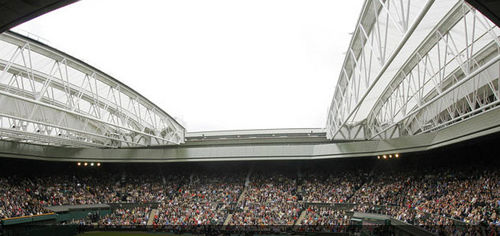SEFAR® Architecture TENARA® Fabric was selected in part for its unparalleled ability to let light pass through while offering reliable protection from the elements. Play at Centre Court still feels like it is outdoors, even when the roof is closed. This is important both to maintain the traditional experience for players and spectators, and to enable cameras to capture high quality images for broadcast. The roof comprises two styles of the fabric, the major part allowing 40% light transmission and some allowing 20%. The two styles are precisely placed to prevent shadows or bright spots on the court.
The ability of SEFAR® Architecture TENARA® Fabric to flex and fold without wear was another critical factor in its selection. The design of the roof, and the folding of the fabric into a relatively compact space for storage, contributed to the addition of 1,200 spectator seats to the stadium. For most of the year, the open roof will be folded into its housing for storage. The unique characteristics of SEFAR® Architecture TENARA® Fabric ensure that it won't crack, crease or develop mold and mildew while stored.
The new retractable roof over Wimbledon's famed Centre Court is built in two sections, one with four bays and the other with five. The fabric was joined using high frequency welding, and is supported by ten steel trusses. Wheels move along tracks to open and close the roof, aided by a series of hydraulic jacks and arms. The roof spans approximately 77 meters across the court, and has a clearance of over 16 meters to accommodate high balls. The roof contains approximately 5,200 square meters of the fabric.





